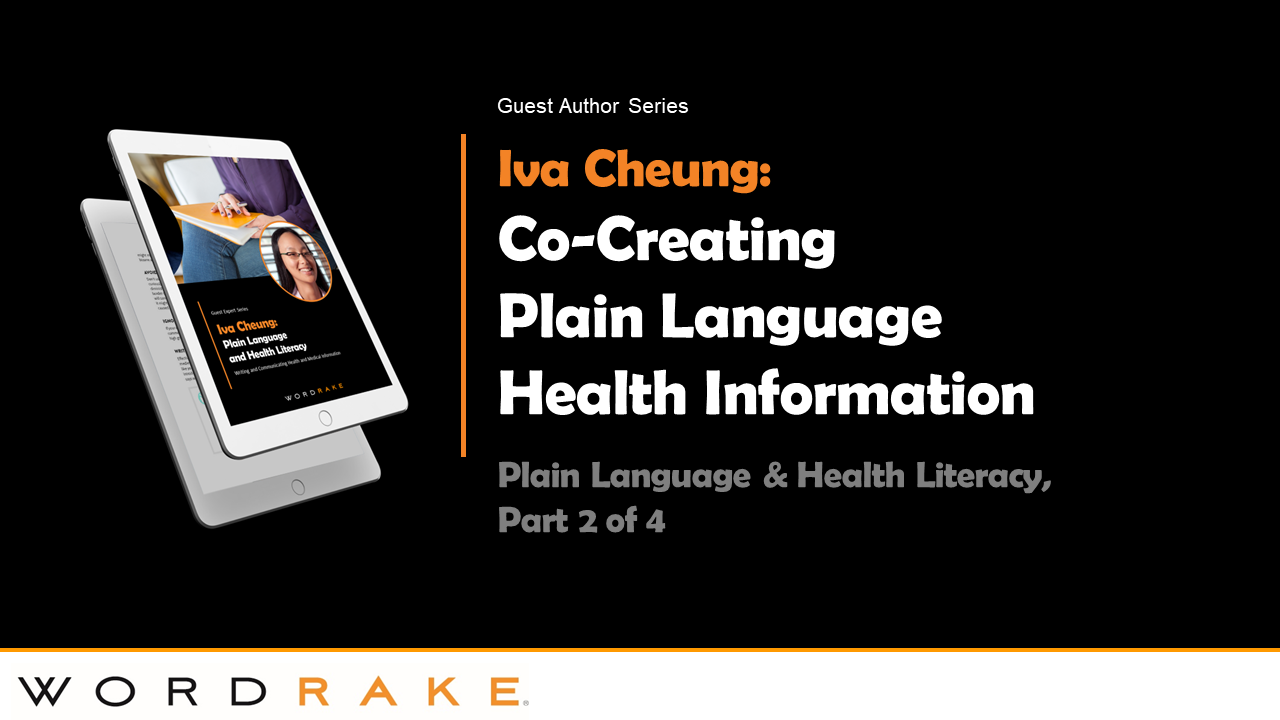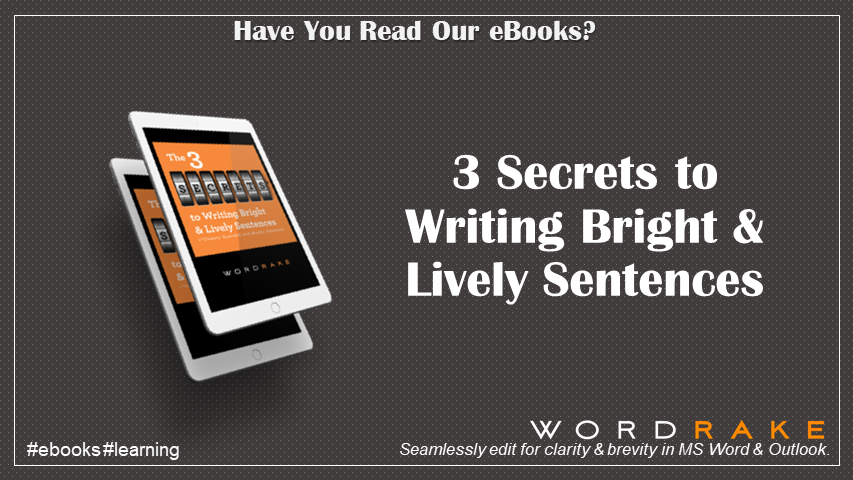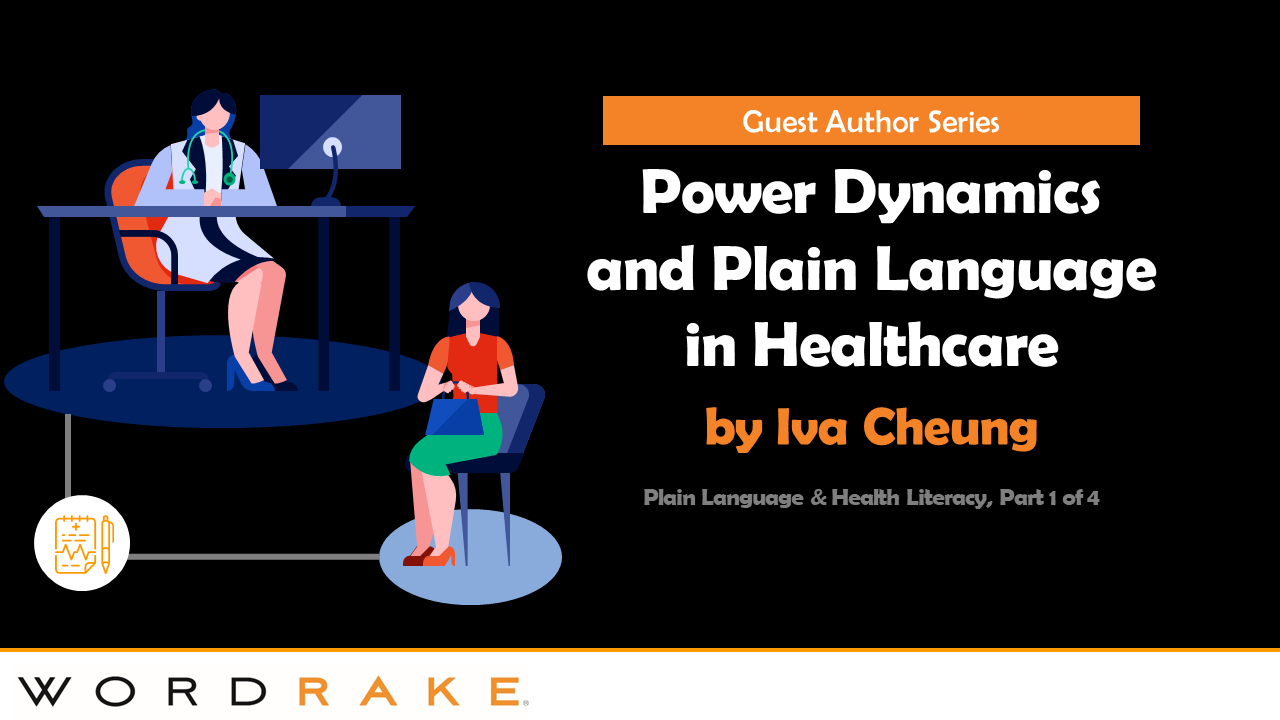Terminology note: I’ll use the term “patients” to refer to people who have direct lived experience with a health condition and who receive services from the healthcare system. Different people may prefer different terms—like client, service user, and self-advocate, among others—depending on context.
Introduction
Plain language centers the audience. You achieve plain language only when your audience finds your communication clear, and what is plain to one audience might not be plain to another. If you follow most plain language advice, you’ll know to use words your audience understands, tell your audience only what they need to know, and start with the most important information. But how do you know what words they’re familiar with and what information they consider important?
You could ask them when you do user testing (which is essential to the plain language process) but why wait until you’ve already created the communication to get their input? You can incorporate their insights from the outset by inviting members of your audience to co-create with you.
Co-Creating Health Information
Co-creating goes beyond consulting your audience when creating your communication—it’s about sharing authorship and decision-making power with people directly affected by the communication. Instead of guessing or assuming what they want to know, what medium they prefer, what language to use, and where they would go seek the information, co-creation embeds audience input into the process from the start.
Co-creation can take many forms. Audience representatives who are skilled or confident communicators themselves may want to write a first draft, which you could then edit in consultation with them. Others may prefer to be interviewed about what they’d like to see in the communication, then have an opportunity to review what you’ve created. Wherever it falls on the spectrum of audience involvement, co-creation recognizes audience members as experts of their own experiences.
Health care (and health research) is one arena where co-creation is growing and in many instances becoming best practice. Patient-oriented researchers and hospital systems creating patient health education materials are giving patients the authority to decide what materials get made and how they get made. The result is a more collaborative, more patient-centered, and less paternalistic approach to health communication.
Case Studies
These are just a few of the many examples of co-creation in health care that have led to patient-centered plain language health information:
A Kid-friendly Assent Form
A group of health researchers in Tasmania, Australia, asked children (ages 6 to 12) to participate in small group discussions where they talked about their understanding and experiences of surgery. The researchers noted the terms that the children used and incorporated those words into an assent form that kids would find easier to understand. Simple revisions based on the children’s feedback, like changing the name of the “Research Information Sheet” to “The Information Letter” and “Assent Form” to “The Letter That Gives Your Permission,” made the assent process more accessible and less intimidating.
Compassionate COVID Communications
When the pandemic hit, the University Health Network in Toronto, Canada, formed a rapid-response group of patient partners to review patient-facing resources about COVID-19, including letters, posters, staff scripts, FAQs, and brochures. Based on patient partner input, the communications team made language and policy changes, including changing the term “visitor,” which implies that they are an optional part of care, to “essential care partner.” Patient partners also suggested clearly explaining the reasons for visitor limits, as well as the processes for exceptions, including providing contact information like phone numbers.
Reaching Underrepresented Groups for Health Research
We can only achieve health equity when everyone has the same access to opportunities to participate in health research, but racialized, low-income, and low-literacy populations have historically been underrepresented. A team in Wisconsin “intentionally sought to recruit people who are not connected with academia, research, healthcare, or local power structures” to join advisory groups to review and revise research information material. The advisors suggested several phrasing changes—for example, “Data will be collected about your lifestyle,” which they interpreted to mean “We will violate your privacy and make judgements about your personal life,” could be changed to “My research team will ask you some questions about a typical day for you.”
Accessible Mental Health Rights Information
In British Columbia, Canada, a research team that included two patient partners developed a suite of information materials to help people who were detained under mental health legislation better understand their rights. Patient input led to wording that acknowledges an involuntary patient’s possible feelings (“you may feel scared, confused, or angry”) and a poster that breaks conventional design advice, using a text-heavy approach that accounts for the unique context of being in a hospital ward with no ready access to books or digital devices. [Full disclosure: I worked on this project.]
User Testing
Co-creation, though a powerful approach, doesn’t replace user testing! Patient partners on your authorship team contribute important perspectives, but the patient community is diverse, and you should still user test your health education materials to make sure they’re meeting your audience’s information needs.
About the Author
Iva Cheung is a Certified Professional Editor, indexer, and researcher specializing in communication accessibility and plain language. She has won three Editors Canada awards: the Tom Fairley Award for Editorial Excellence, the President's Award for Volunteer Service, and the Karen Virag Award for promoting the editing profession. She holds a Master of Publishing degree and a PhD in health sciences, and she teaches a course on health literacy for Simon Fraser University's Plain Language Certificate program. Find Iva at ivacheung.com or follow her on Twitter.
Series on Plain Language and Health Literacy
This is the second piece in a series of four articles on plain language and health literacy by award-winning editor Iva Cheung. Plain language can improve communication in many professions, and with this series, we hope to show how plain language and clear, thoughtful word choice is integral to effective healthcare.
For many readers, writing is easier to understand when it is clear and concise, rather than flowery, wordy, or clogged with jargon. With a single click, WordRake editing software generates edit suggestions to remove unnecessary words and use simpler phrasing. Try it yourself and see how readers respond to documents and emails improved by WordRake! WordRake is available for Microsoft Word and Outlook on Windows, or for Microsoft Word only on Mac. You can try it free for 7 days.








